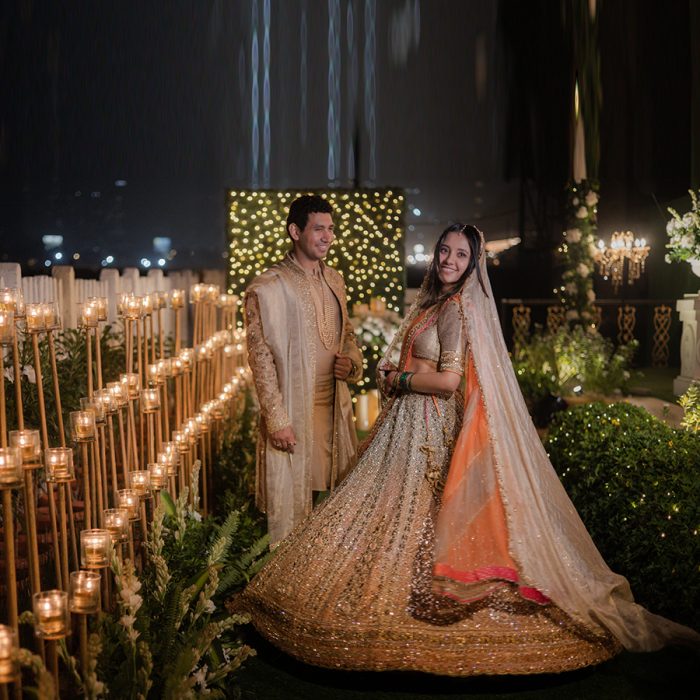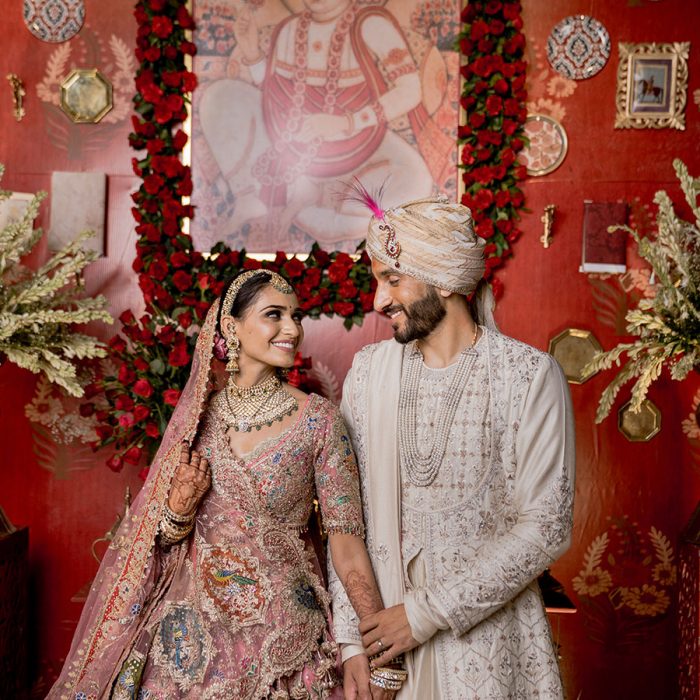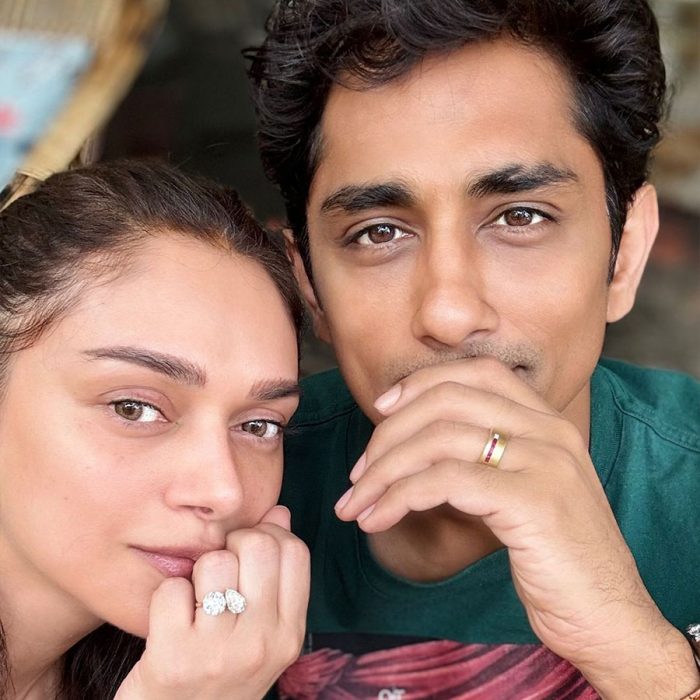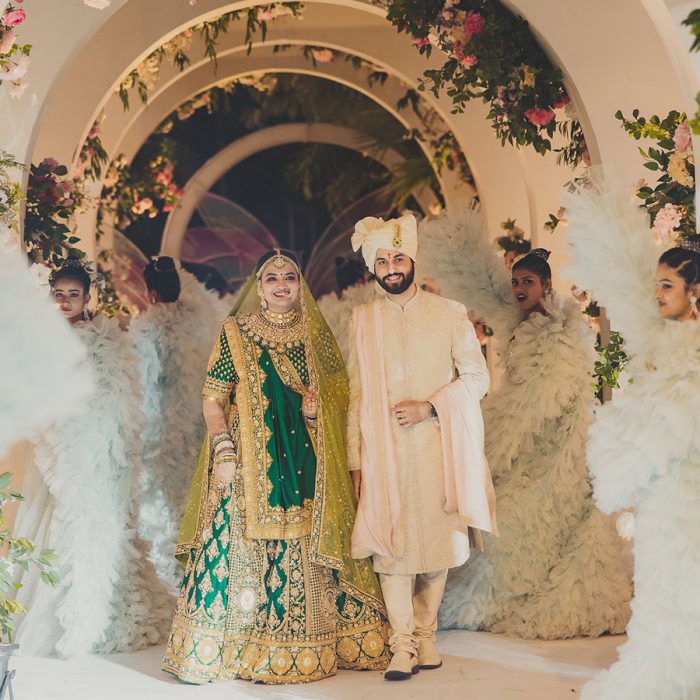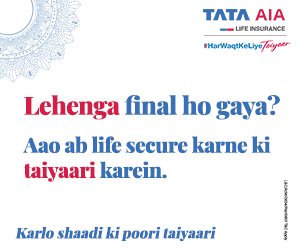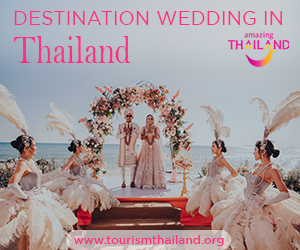Maharashtrian Weddings: Customs and Traditions
Rituals, customs, style and more! Here's everything you need to know about Maharashtrian weddings.
Simple yet soulful, Maharashtrian weddings fuse traditions, emotions and family bonhomie effortlessly. In this installment of our Wedding Tradition Series, we explore the rituals of Maharashtrian weddings that showcase their culture so beautifully.
As more and more couples from diverse cultures and countries tie the knot, they desire a beautiful blend of memorable celebrations. This Wedding Tradition Series aims to answer all your questions about ceremonies in different Indian cultures and their significance, how to dress for functions, and more. Here, you are invited to step into the vibrant and traditional festivities, fashion and food of an authentic Maharashtrian wedding!
Wedding Functions
Sakhar Puda:
Considered the formal engagement ceremony, the ‘sakhar puda’ is an intimate gathering of the two families at which the groom’s mother applies haldi-kumkum on the bride’s forehead as blessing. She is then presented with a saree, jewellery, gifts and a packet of sugar or sweets. This signifies the bride’s acceptance into the groom’s family. The bride’s mother also follows the same rituals with the groom.
Muhurat Karane:
After the date and time of the wedding is set, months before the D-day, five married women are invited by the bride’s mother to come over on an auspicious day. With an iron pestle, they grind turmeric to be used later, as well as pulses and spices, and roll papads. The rituals are followed by the shopping, after which they hold the ‘rukhvat’ ritual where the bridal trousseau, utensils, sweets and other things are artistically displayed for viewing.
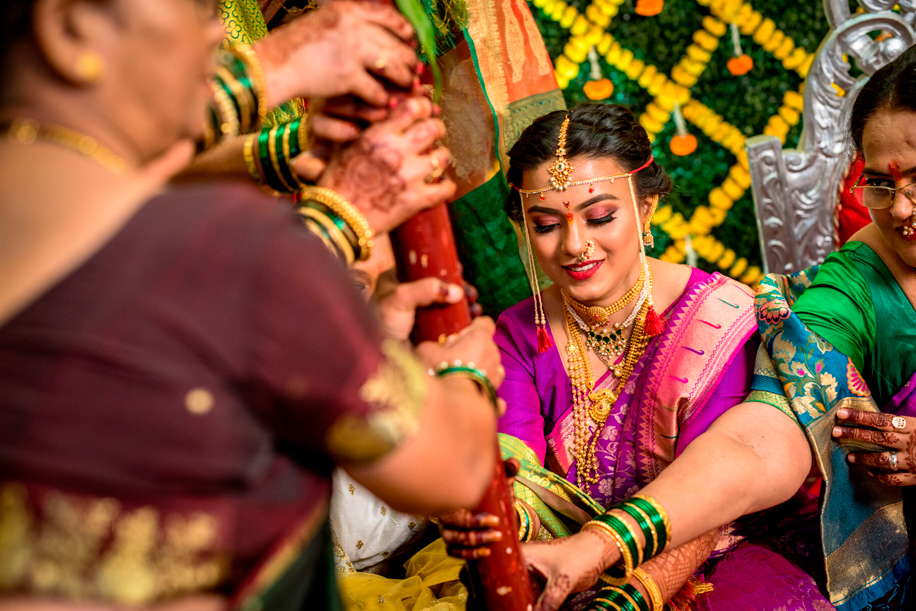 Photo Courtesy: Reflexion by NS
Photo Courtesy: Reflexion by NS
Wedding Invitations:
The invitations are then selected and printed. Before they are sent to the guests, the first one is presented to an idol of Lord Ganesha, as a symbolic request for him to grace the wedding with his presence.
Kelvan:
A few days prior to the wedding, both families perform a puja to their ‘kul devta’ or family deity that they worship, seeking blessings for the union. The prayer meet is generally followed by a meal.
Halad Chadavane:
‘Halad chadavane’ is a function common to all Indian weddings. In Maharashtrian culture, this is performed the day before the wedding by the women who performed the ‘muhurat karane.’ Turmeric paste is applied by mango leaves on the groom’s shoulders, forehead, hands and feet. The paste is then sent to the bride’s home and is used to perform the same ritual for the bride.
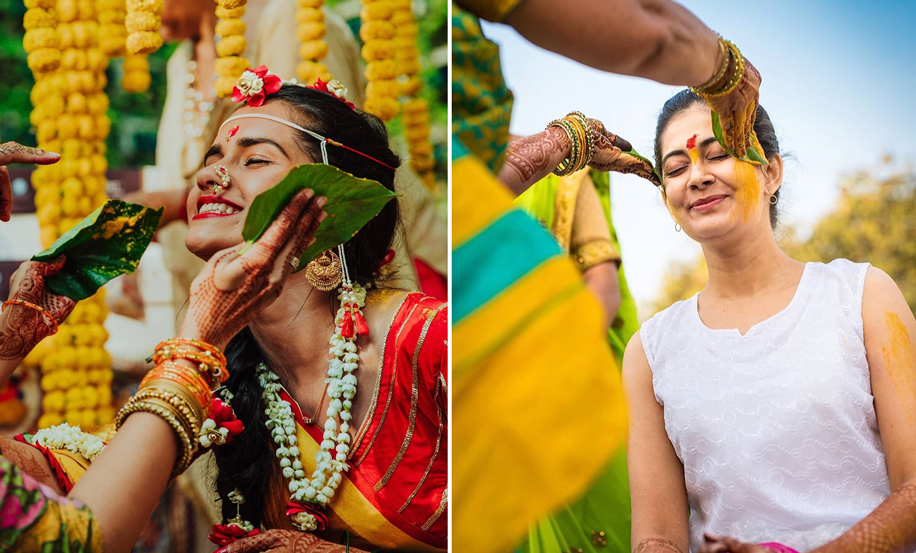 Photo Courtesy: Girish Katkar Photography and Reflexion by NS
Photo Courtesy: Girish Katkar Photography and Reflexion by NS
Chura:
In the ‘chura’ ceremony, the bride is given a set of green glass bangles, along with gold or pearl ones. In Maharashtrian culture, green is seen as a symbol of life, creation and fertility. The color is considered lucky and represents hopes for a newly married couple’s happy life. The bangles are meant to be worn till at least a month after the wedding.
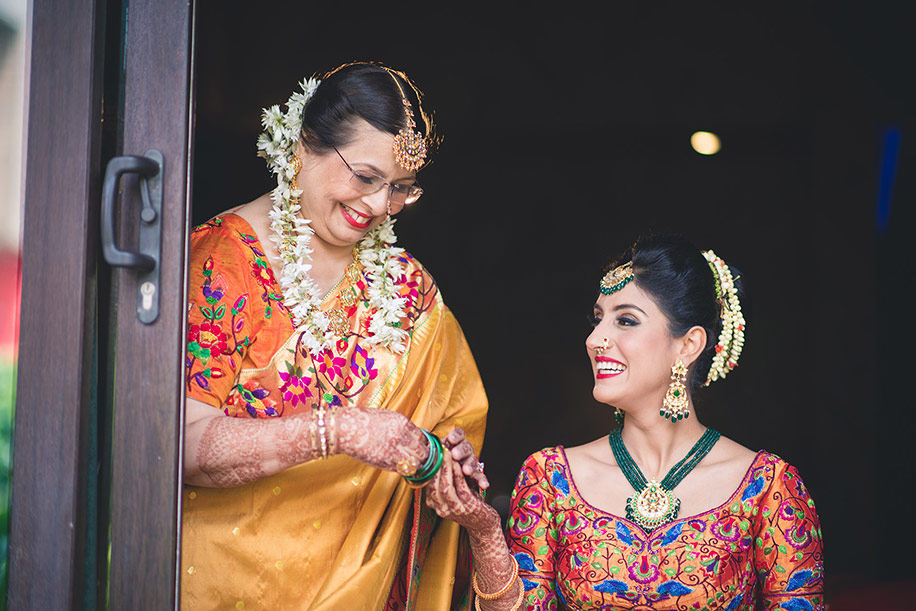 Photo Courtesy: WeddingNama
Photo Courtesy: WeddingNama
Ganpati Puja:
A Ganpati puja marks the beginning of all auspicious occasions in Maharashtrian culture to ensure the success of every endeavour without any obstacles. The wedding days begin by first invoking the blessings of Lord Ganesha for the couple’s future happiness.
Punyavacha:
At the venue of the wedding, the bride’s parents ask the relatives and guests to bless their daughter during the ‘punyavacha’ ritual.
Devdek:
The “kul devta” or family deity is once again invoked at the site of the wedding.
 Photo Courtesy: The Wedding Salad
Photo Courtesy: The Wedding Salad
Seemanpujan:
The groom arrives at the venue with his family, and is received by the bride’s mother who washes his feet, applies tilak on his forehead, does aarti and welcomes him inside.
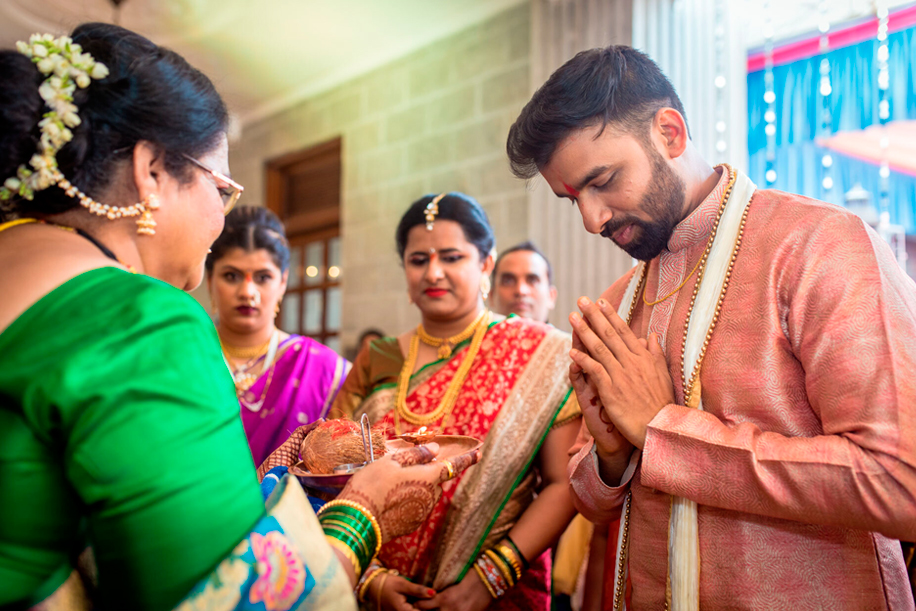 Photo Courtesy: Reflexion by NS
Photo Courtesy: Reflexion by NS
Gaurihar Puja:
The bride’s wedding attire, which traditionally is a bright Paithani saree or a silk shalu is generally gifted to her by her maternal uncle. Gold jewellery and flowers in her hair complete the look. Decked in her bridal glory, she performs the ‘Gaurihar puja’ where she worships a silver idol of Goddess Parvati placed on a mound of rice. She offers the idol some rice and asks her to bless her with a prosperous future.
Antarpat:
The groom arrives at the mandap, wears the ‘mundavalya’ (holy ornamental thread tied around the heads of the bride and groom) and sits on his seat. He is hidden by a cloth curtain called the ‘antarpat,’ to prevent him from seeing the bride.
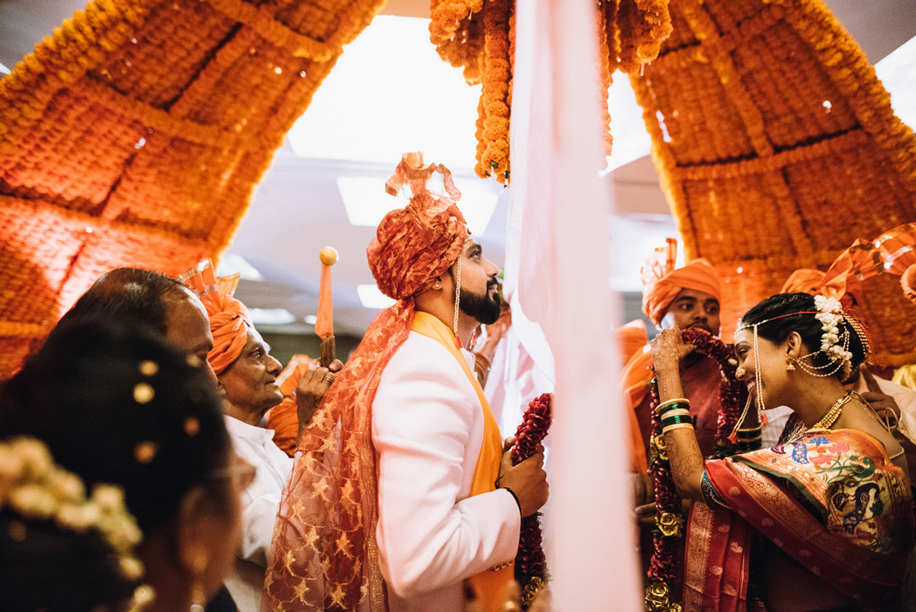 Photo Courtesy: Intocandid
Photo Courtesy: Intocandid
Sankalp:
As the priest recites holy wedding chants, the bride is led to the mandap by her maternal uncle. The ‘antarpat’ is removed and the couple lay eyes on each other for the first time, which makes for quite an emotional moment. They exchange garlands and are showered with ‘akshatas’ (unbroken yellow colored rice and flowers).
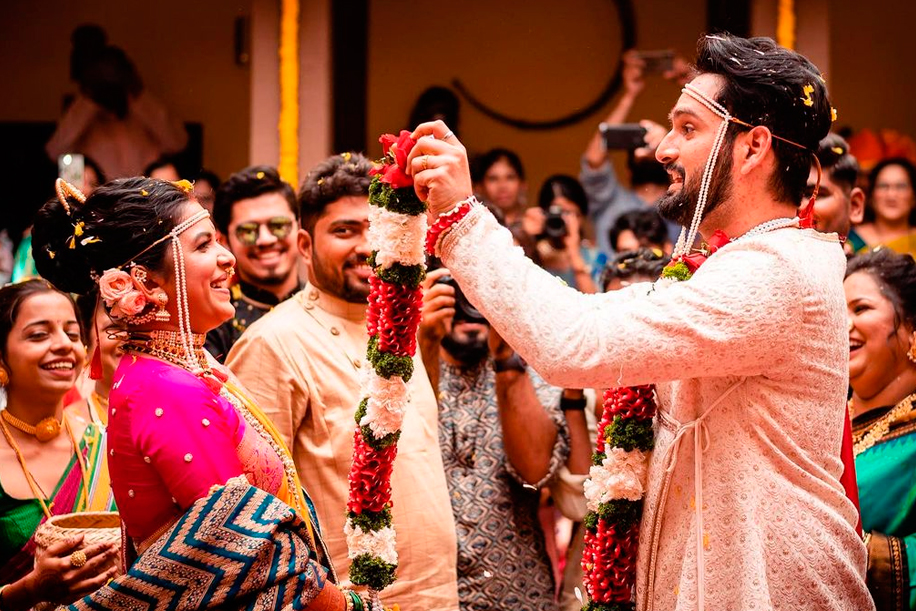 Photo Courtesy: Gaatha
Photo Courtesy: Gaatha
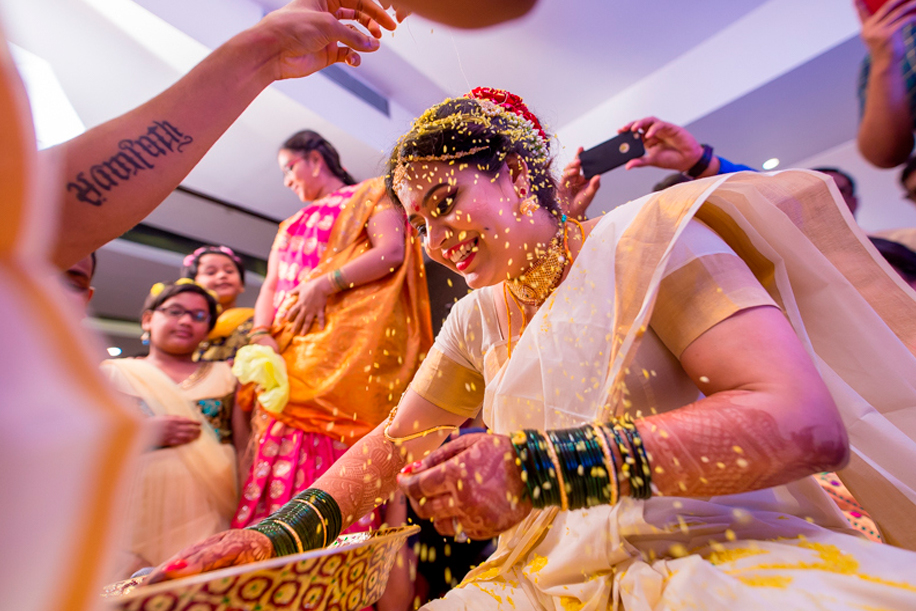 Photo Courtesy: Knotty Affair by Namit and Vipul
Photo Courtesy: Knotty Affair by Namit and Vipul
Kanyadaan:
In a ritual common to all weddings in India, the father of the bride gives his daughter to her groom with blessings for their new life. The grooms accepts her and pledges to love and respect her for a lifetime.
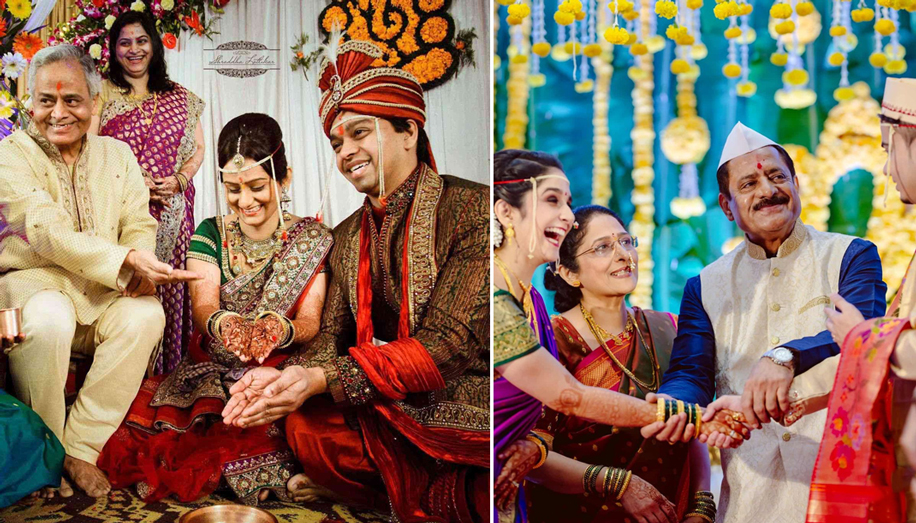 Photo Courtesy: The Wedding Salad
Photo Courtesy: The Wedding Salad
Lajahoma:
The bride offers grains to the holy fire or havan as she chants three mantras, which the groom repeats. She then chants the fourth mantra alone, silently. The bride’s parents then worship the couple as reincarnations of Lord Vishnu and Goddess Lakshmi, after which the bride and groom tie holy threads on each other’s hands. Finally, the groom puts sindoor on his bride’s head and ties the mangalsutra around her neck.
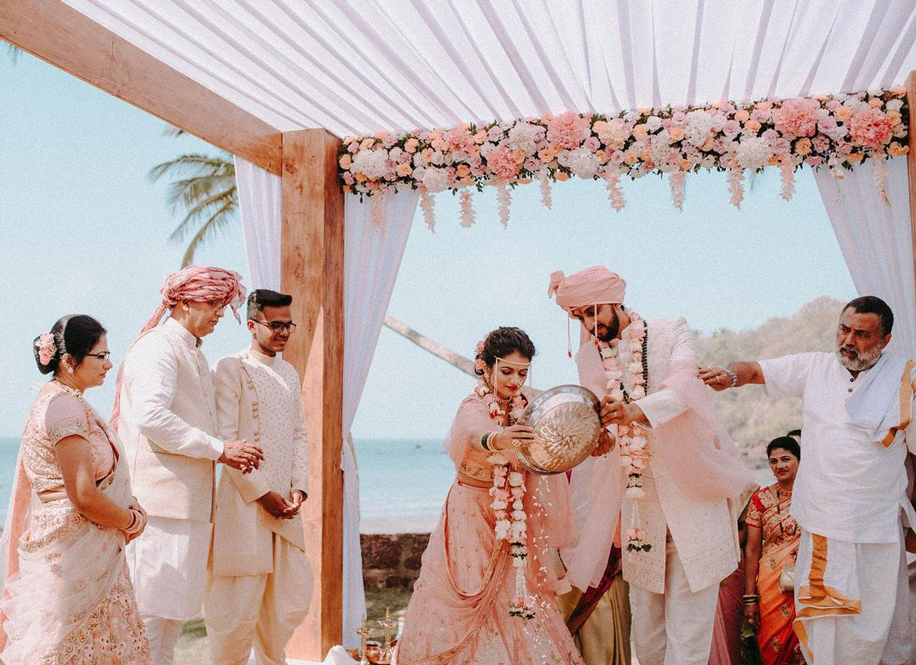 Photo Courtesy: Three Little Words
Photo Courtesy: Three Little Words
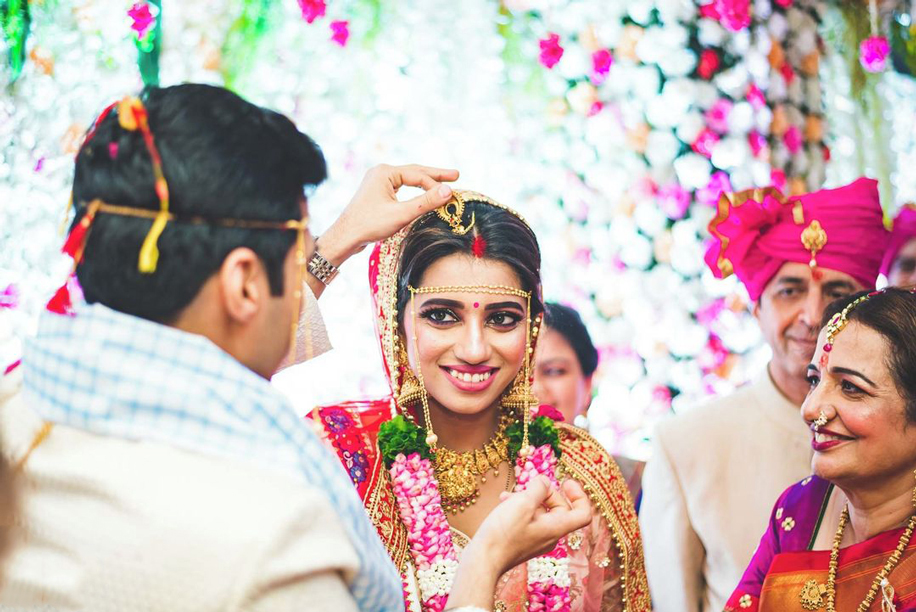 Photo Courtesy: WhatKnot
Photo Courtesy: WhatKnot
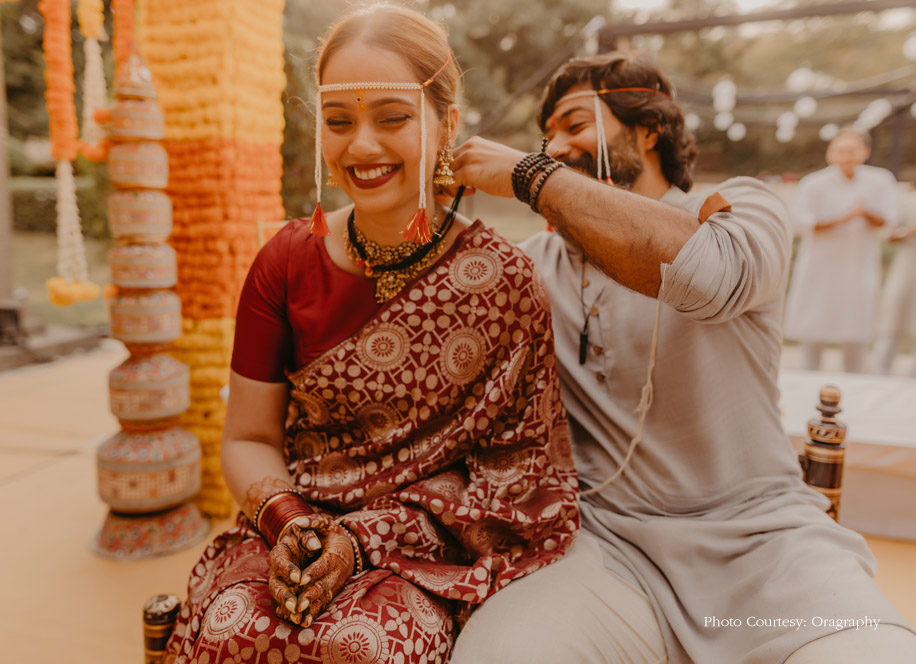 Photo Courtesy: Oragraphy
Photo Courtesy: Oragraphy
Saptapadi:
The couple then perform the ‘saptapadi’ which involves walking around the holy fire seven times while reciting their seven wedding vows aloud.
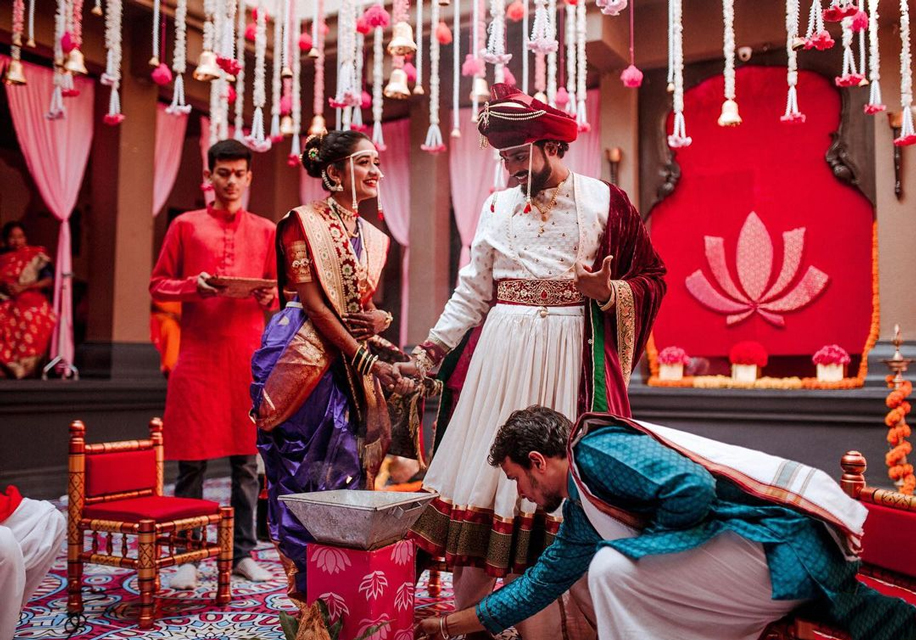 Photo Courtesy: Girish Katkar Photography
Photo Courtesy: Girish Katkar Photography
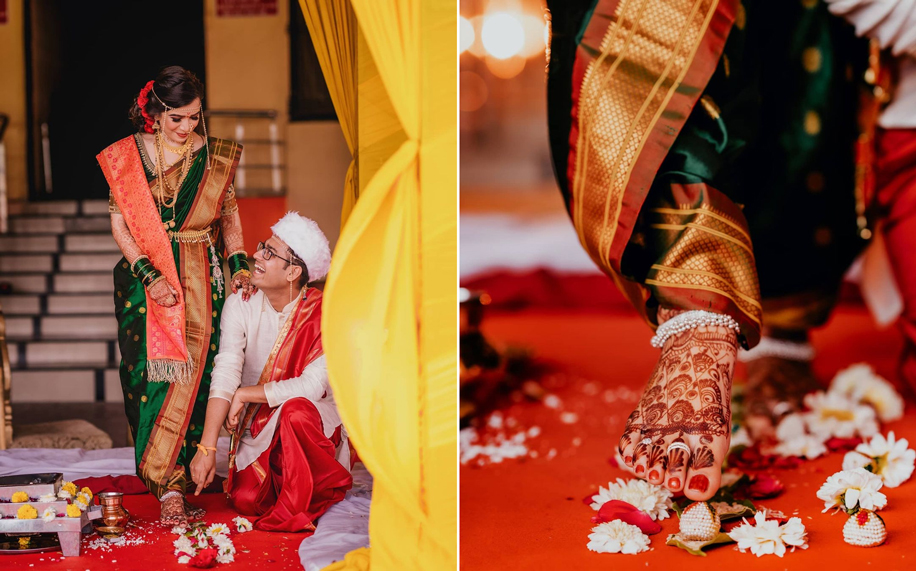 Photo Courtesy: Niraj Sarda
Photo Courtesy: Niraj Sarda
Kama Samapti:
The wedding rituals come to an end with the ‘kama samapti’ ritual, where the couple perform Laxmi Puja till the fire goes out, after which the groom gives his bride a new name.
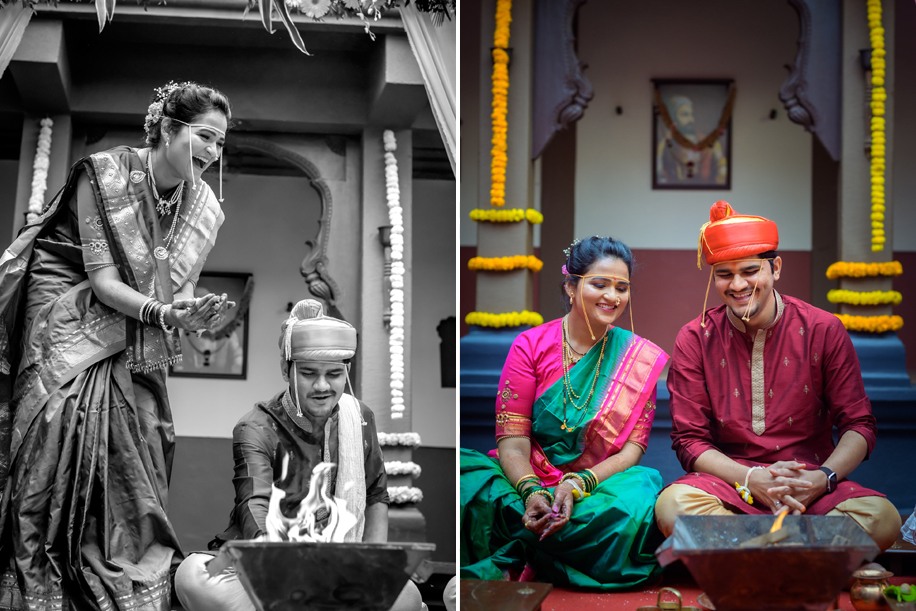 Photo Courtesy: Reflexion by NS
Photo Courtesy: Reflexion by NS
Kaan Pili:
In a cheeky tradition, the bride’s brother twists the groom’s ear to remind him to take care of his sister. After that, the couple seeks everyone’s blessings.
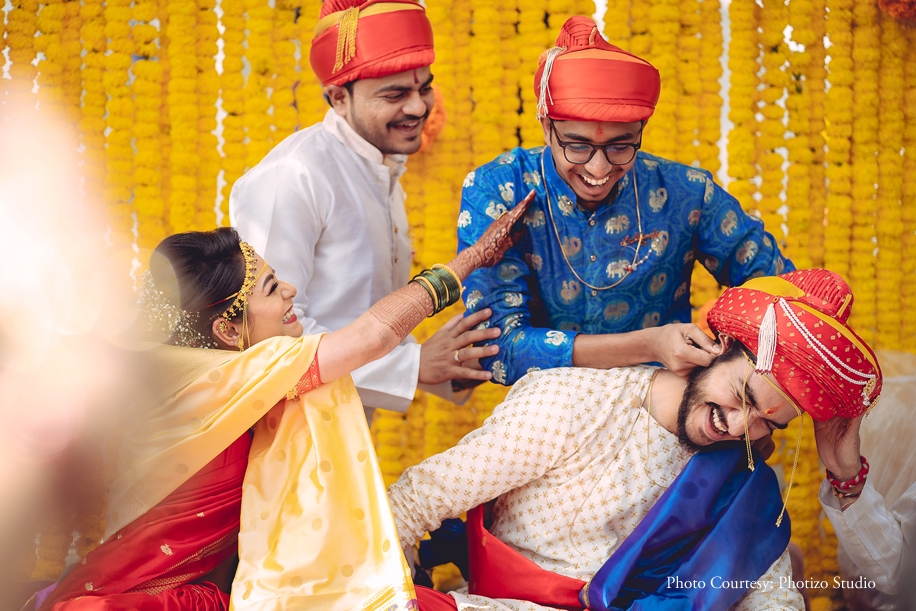 Photo Courtesy: Photizo Studio
Photo Courtesy: Photizo Studio
Varat:
After the wedding, the bride bids her family farewell as she leaves for her new husband’s home. As she says her emotional goodbyes, the groom carries the Parvati idol she had worshipped in the ‘Gaurihar Puja.’ A large procession accompanies the couple to the groom’s residence.
Griha Pravesh:
The newlyweds are greeted by the groom’s mother at the entrance, where she performs aarti and then washes the couple’s feet with milk and water. The bride then knocks over a kalash (a traditional water bowl) filled with rice before entering the home with her right foot and typically accompanied by her husband.
 Photo Courtesy: Girish Katkar Photography
Photo Courtesy: Girish Katkar Photography
Reception:
The celebrations conclude with a reception party, where the bride is formally introduced to all their relatives and friends. The bride dons a saree gifted by the groom’s family, while the groom wears an outfit gifted by the bride’s family.
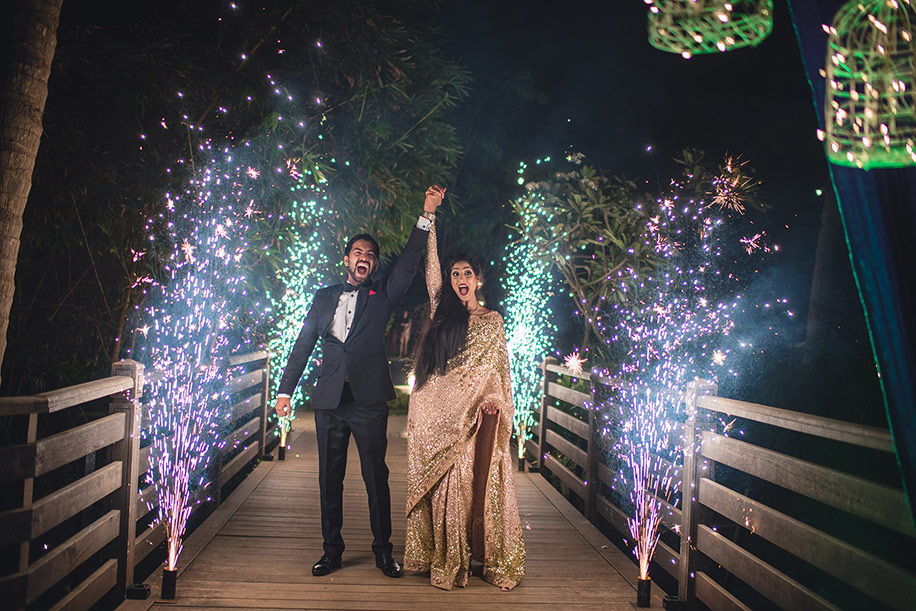 Photo Courtesy: WeddingNama
Photo Courtesy: WeddingNama
Things You Will See in a Maharashtrian Wedding:
While all Hindu weddings share common cultural and ritual nuances, there are some interesting aspects are instrinsic to Maharashtrian weddings.
Deep-rooted Rituals:
One of the first things you’ll notice at a Maharashtrian wedding is the importance of family and specific traditions that have been passed down the generations. While exuberance in both decor and festivities are commonly associated with most Indian weddings, Maharashtrian celebrations are rooted in simple customs, and are marked by sweet, soulful interactions with close family and friends. The scale is typically not lavish like a Punjabi wedding, but there is enough authentic character and close bonhomie among the community that celebrates every function with a large spirit.
Mundavalya:
A traditional head ornament, the ‘mundavalya’ comprises thin strings of flowers, beads or pearls that is worn across the forehead and down the face by the bride and the groom in Maharashtrian weddings.
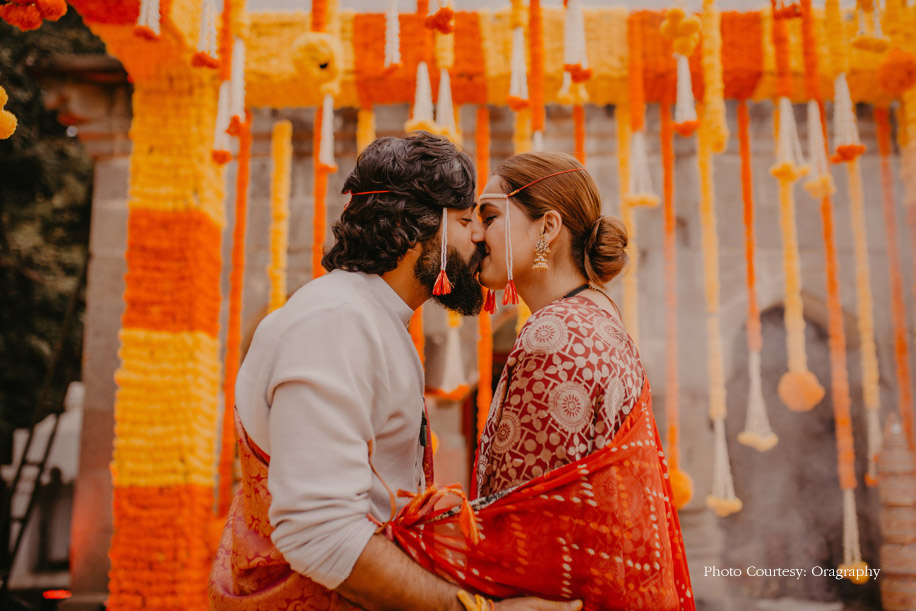 Photo Courtesy: Oragraphy
Photo Courtesy: Oragraphy
Heavenly Hues:
The deeply traditional and festive spirit of Maharashtrian culture reflects in their outfits as well. Brimming with inspiration from Maratha heritage, wedding fashion, for women especially, includes shimmering silks in eye-catching hues and striking combinations which are invariably paired with gold jewellery.
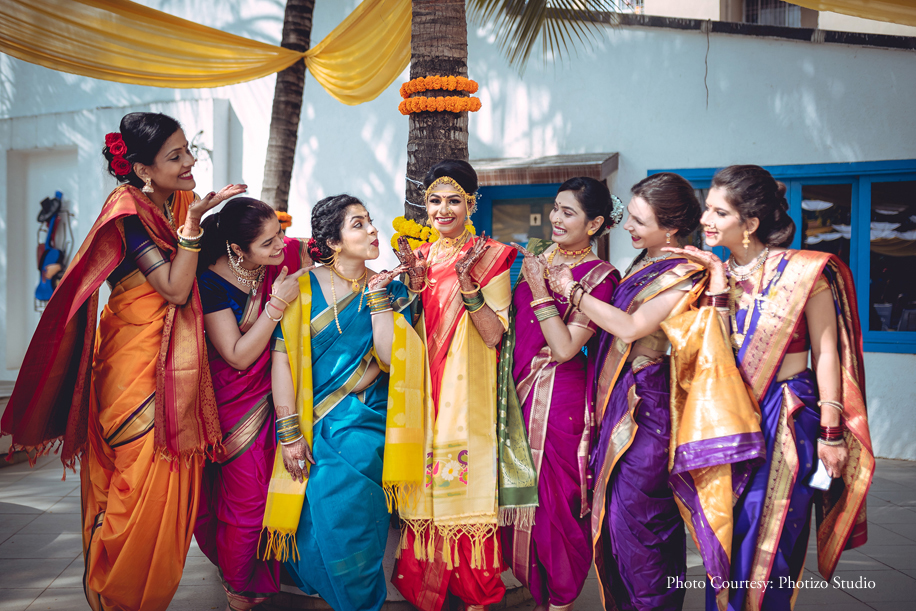 Photo Courtesy: Photizo Studio
Photo Courtesy: Photizo Studio
Morning Festivities:
Culturally, Maharashtrians believe that the daytime hours are beneficial for auspicious occasions, and most wedding celebrations wind up by sunset.
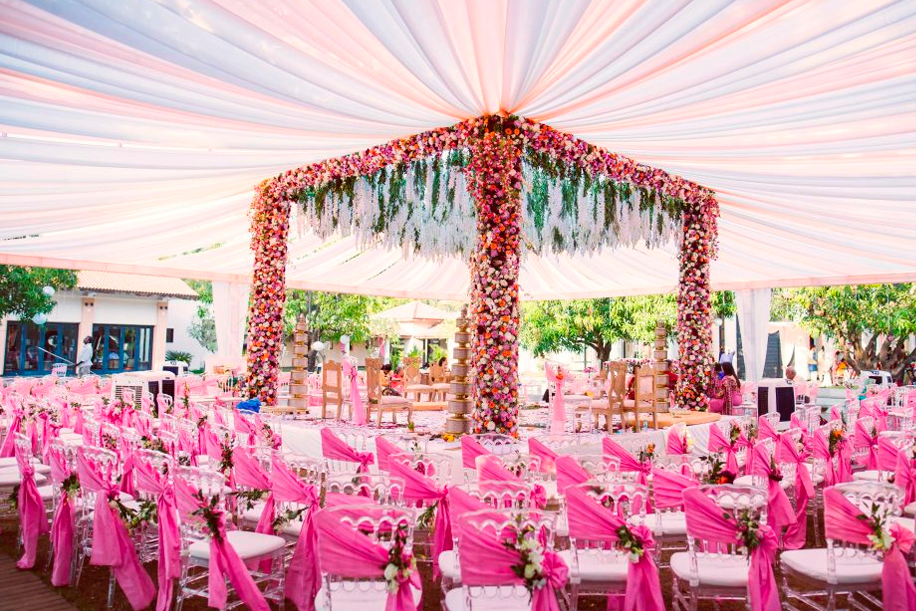 Photo Courtesy: The Wedding Salad
Photo Courtesy: The Wedding Salad
Delectable Vegetarian Fare:
Simple and soulful, much like their traditional festivities, the cuisine at most Maharashtrian weddings features mainly vegetarian dishes which include popular favorites like deep-fried vadas, puran poli and shrikhand.
Fashion Tips for an Authentic Maharashtrian Look:
Pretty Paithani Sarees:
Originating from the Paithan town of Aurangabad in Maharashtra, these beautiful silk sarees come in the most gorgeous colors with rich thread work. Traditionally worn by the bride, it can also be donned by her family and friends.
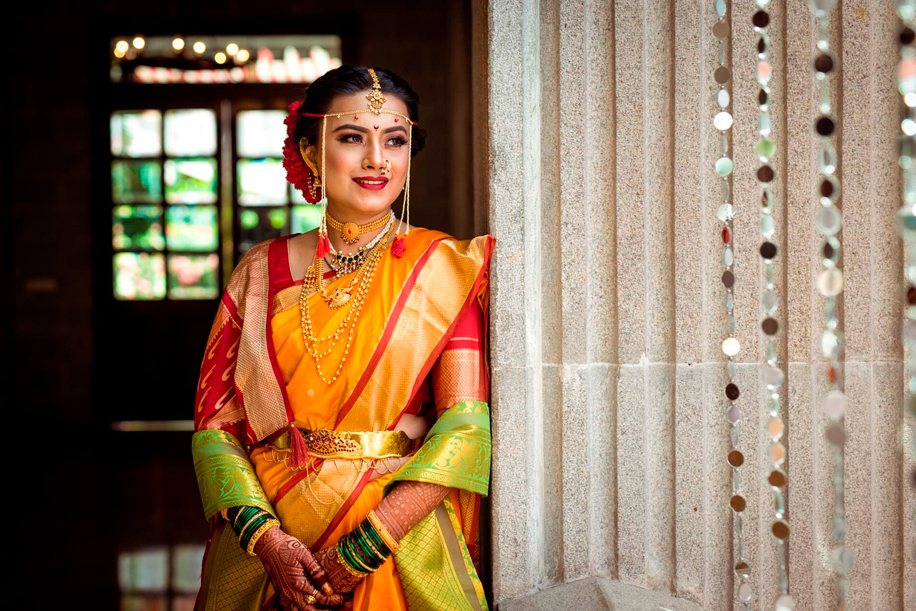 Photo Courtesy: Reflexion by NS
Photo Courtesy: Reflexion by NS
Kaleidoscope of Colors:
When it comes to Maharashtrian weddings, vibrant colors rule the roost especially when it comes to ensembles and accessories.
Nauvari Style:
The nauvari saree, or “the nine-yard saree” is the traditional saree of the region, and is draped in a style we have all seen and come to love in popular culture through movies such as ‘Bajirao Mastani.’ A lovely way to embrace Marathi culture, it is also incredibly comfortable to wear and does not restrict movements.
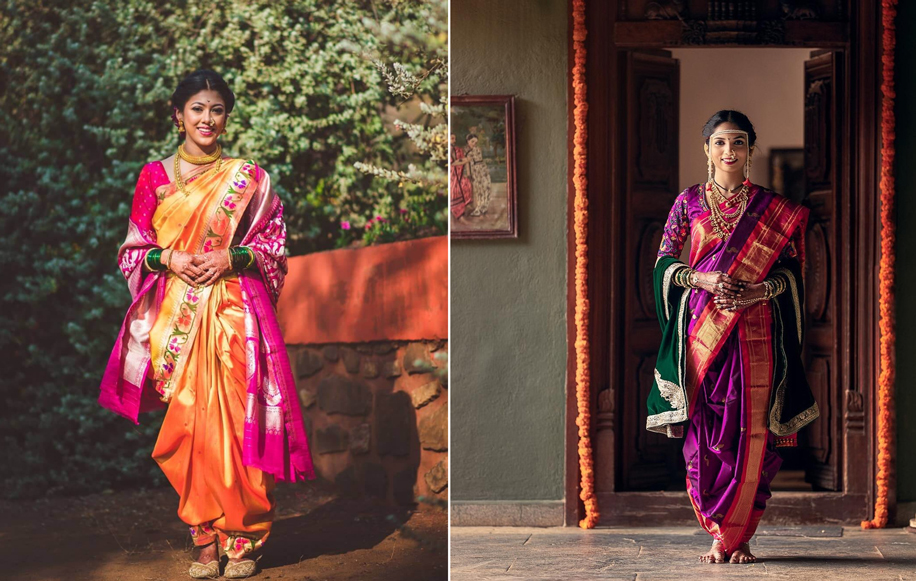 Photo Courtesy: WhatKnot
Photo Courtesy: WhatKnot
Kolhapuri Sandals:
A traditional open-toe sandal made of leather, this flat style is the perfect way to stay comfortable while looking great. Opt for colorful or embellished styles to match your traditional attire.
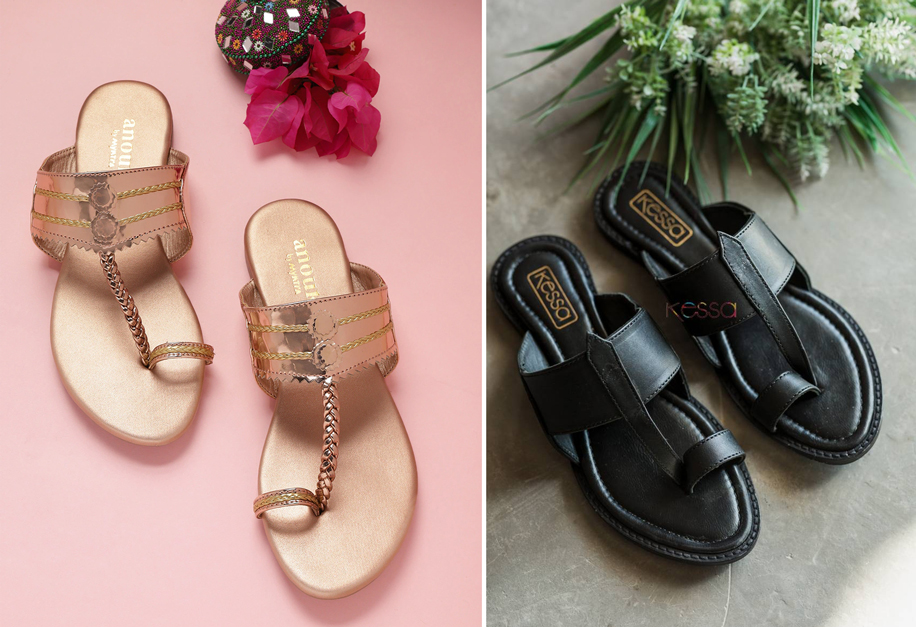 Photo Courtesy: Anouk and Kessa
Photo Courtesy: Anouk and Kessa
To start planning your wedding, click here
